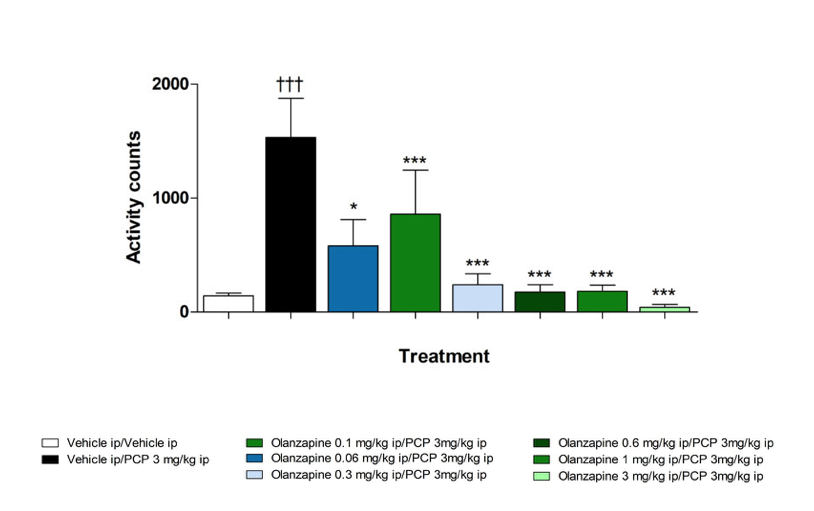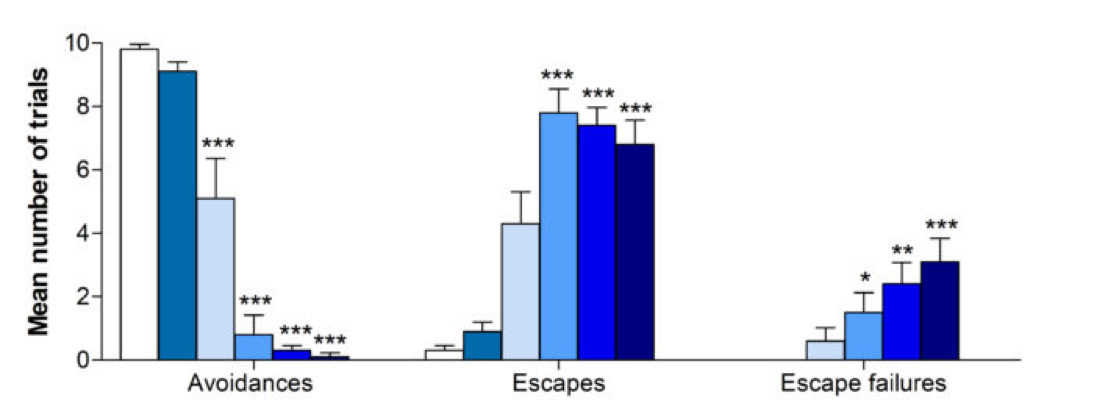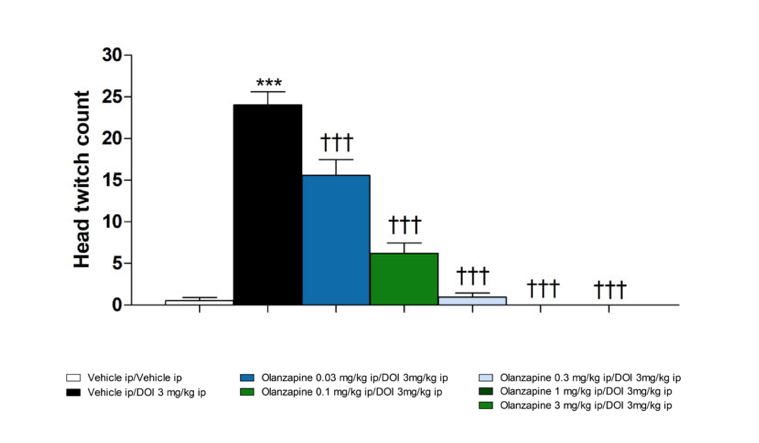Schizophrenia, Psychosis
Sygnature offers a range of assays that can be used to develop compounds to treat schizophrenia and related disorders. Compounds can be evaluated in well-established dopaminergic or hypo-glutamatergic hyperactivity assays, as well as assessment in the conditioned avoidance assay; selective disruption of the conditioned response is a characteristic property of both typical and novel antipsychotic agents.
Amphetamine or PCP induced locomotor activity
- Antipsychotic drugs reverse the hyperactivity induced by amphetamine or PCP in mice and rats
Reversal of PCP-induced hyperactivity in mice by the atypical antipsychotic olanzapine

Conditioned Avoidance Response
- Typical and novel antipsychotic agents selectively inhibit the conditioned avoidance response in rats without affecting the unconditioned response. The efficacy of a drug to suppress conditioned avoidance responding in rats correlates with its ability to reduce psychosis in man. The conditioned avoidance response test is a crucial model in development of drugs to treat schizophrenia
The atypical antipsychotic Olanzapine reduces conditioned avoidance responding in rats


DOI-induced head twitch in mice
- Many novel antipsychotic agents inhibit DOI-induced head twitch indicating an interaction with the serotonergic system
Inhibition of DOI-induced head twitch in mice by the atypical antipsychotic olanzapine

